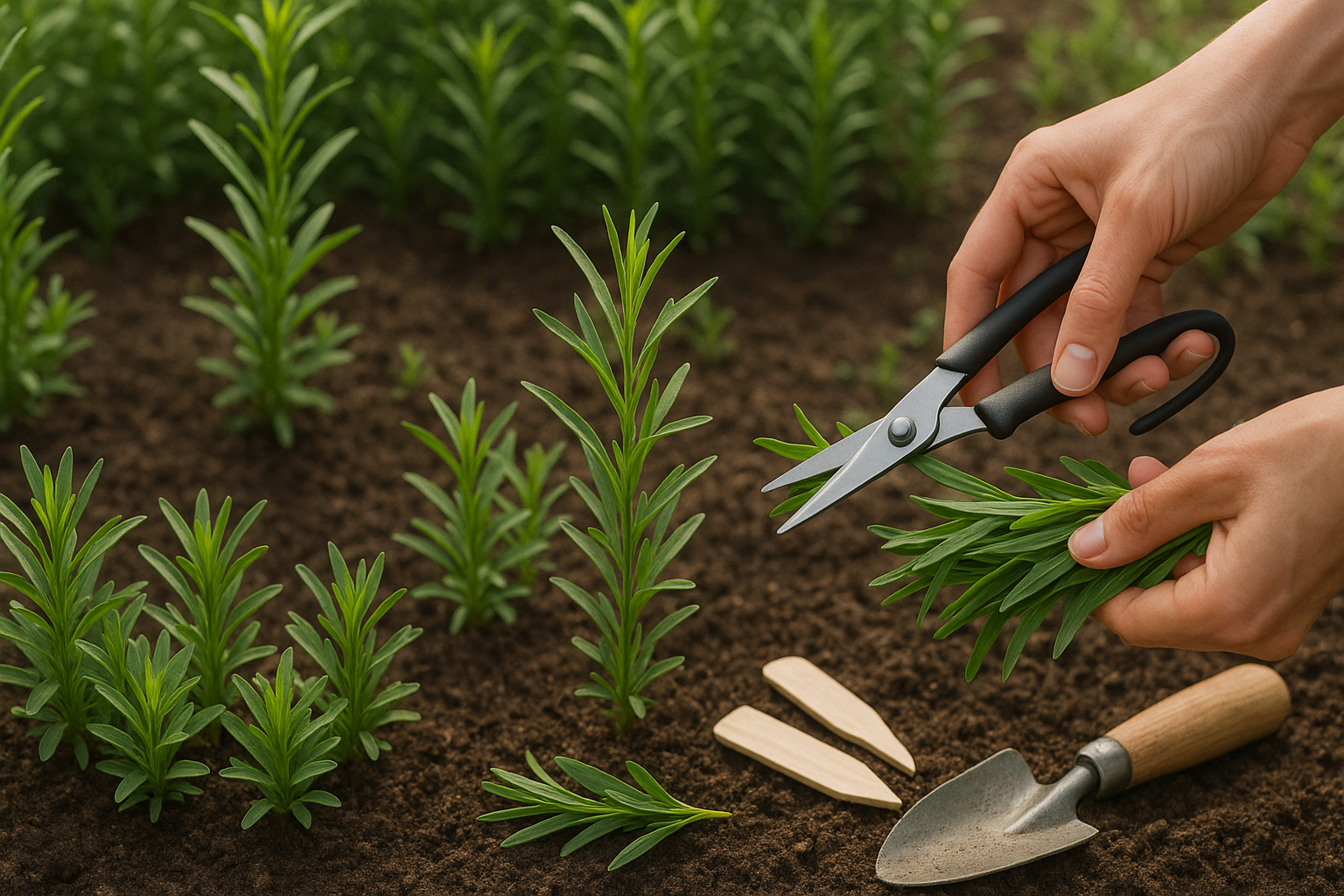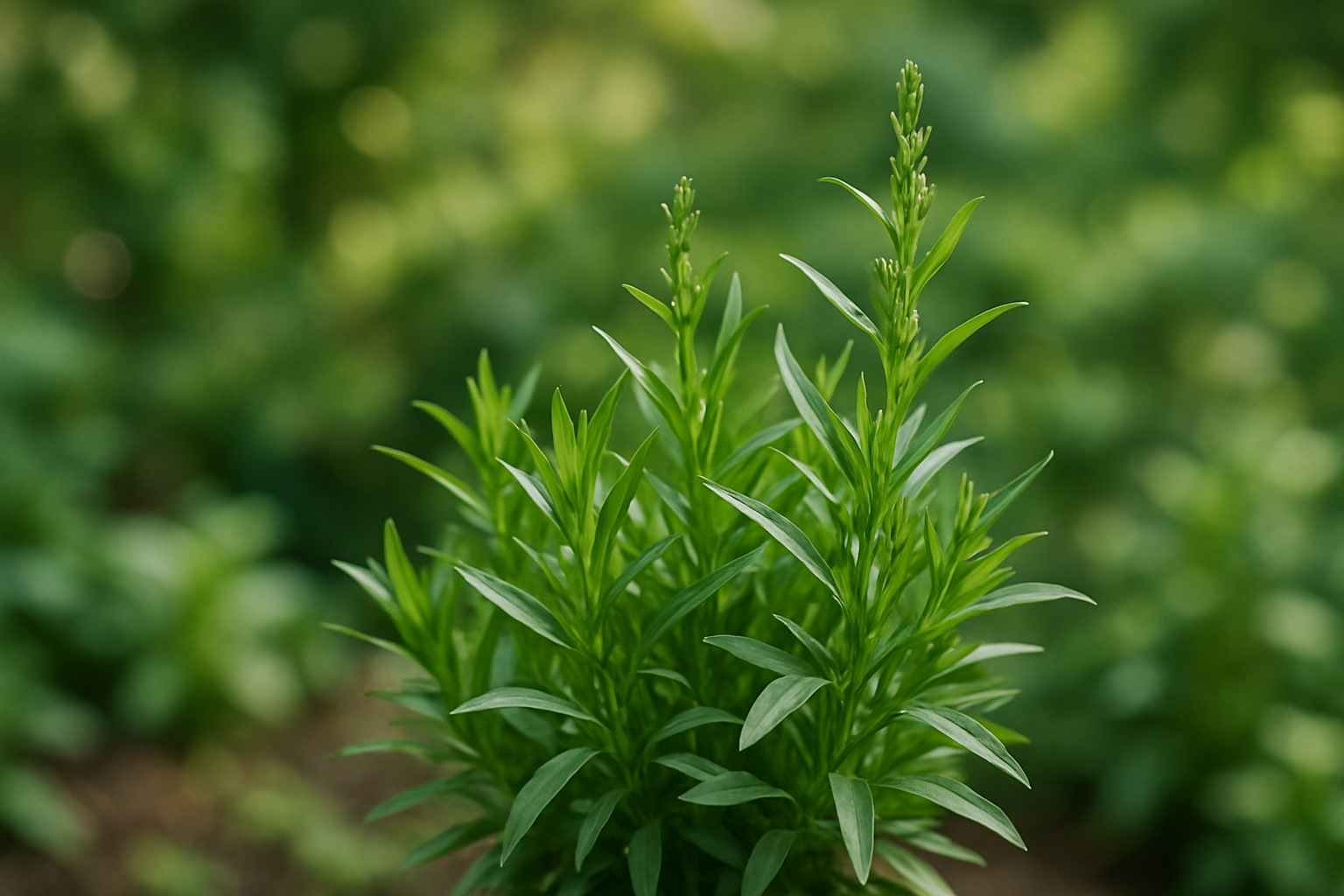What is Tarragon Bolting?

Tarragon bolting happens when the plant shifts from its leafy growth stage into its reproductive phase, sending up tall stems and producing flower buds. This natural process usually occurs in response to triggers like warming temperatures or longer daylight hours, signaling the plant that it’s time to focus on producing seeds.
For tarragon growers, the early signs include rapid vertical growth—stems suddenly shoot up, and the plant’s shape becomes lanky or leggy. Soon after, tiny flower buds start appearing at the stem tips, while the once plentiful, tender leaves may become smaller, tougher, or even develop a slightly bitter taste.
Bolting is especially concerning for tarragon because it diverts energy away from leaf production, directly affecting both the flavor and texture of the leaves. Chefs and home cooks value tarragon for its sweet, anise-like aroma, but once flowering begins, the oils responsible for this distinctive flavor start to fade.
How to Prevent Tarragon Bolting
To prevent bolting, gardeners often pinch off early flower stalks and harvest leaves regularly before the summer heat arrives. Maintaining the right growing conditions can also help delay bolting:
- Keep tarragon plants in partial shade
- Provide steady moisture
- Maintain cooler growing temperatures
Recognizing the signs early not only helps you harvest the most flavorful leaves but also extends the overall productivity of your tarragon patch throughout the growing season.
Why Does Tarragon Bolt?
Tarragon tends to bolt, or go to seed, when exposed to specific environmental triggers like high temperatures, extended daylight hours, and plant maturity. Heat waves in late spring or summer can push even healthy tarragon plants to produce flowers and seeds faster than usual. Long daylight, especially in northern regions with lingering summer sunlight, signals the plant to shift from leafy growth to reproduction.
Besides these natural cycles, certain cultivation habits increase the likelihood of bolting. Plants under stress—whether from drought, infrequent watering, compacted or poor soil, or missed harvests—often respond by going to seed earlier. Regular harvesting of leaves helps keep tarragon in its vegetative state and delays flowering.
It’s also important to know that not all types of tarragon bolt the same way:
- French tarragon: Prized for its flavor, this variety is sterile and rarely flowers but can struggle with heat stress and decline quickly in hot weather.
- Russian tarragon: Hardier and tolerant of a wider range of conditions, it bolts and produces seeds more readily, though its leaves are less flavorful.
- Mexican tarragon: Thrives in heat, bolts later in the season, and is less sensitive to day length, making it a great alternative for gardeners in hot climates.
To prevent your tarragon from bolting early, prioritize regular harvesting, provide some afternoon shade during heat, keep the soil consistently moist, and choose the right variety for your climate and kitchen needs.
Impact of Bolting on Tarragon Flavor and Harvest
Bolting is a natural process for tarragon, but it can dramatically change the quality of your harvest. When tarragon bolts—usually triggered by longer days and warmer temperatures—the plant quickly sends up tall flower stalks, shifting its energy from producing tasty leaves to making seeds.
As a result, the leaves become smaller, tougher, and noticeably more bitter or bland, losing the delicate anise flavor that fresh tarragon is known for. After flowering, the decline in both leaf production and taste is swift. You’ll notice fewer new leaves, and those that do appear are often less vibrant and may quickly yellow or wither.
If you’re harvesting during or after bolting, expect a diminished yield and reduced culinary quality—the leaves harvested at this stage often lack the fresh punch needed for recipes and are best avoided in salads or as a garnish.
To get the best flavor and texture, it’s wise to harvest tarragon leaves early, just before the plant shows signs of sending up flower stalks. Pinching off any emerging buds can also help delay bolting and extend your harvest window.
If your plant is already past its prime, consider cutting it back hard and giving it time to regrow, although the flavor may not fully return to its pre-bolt sweetness.
Preventing Tarragon from Bolting
Keeping your tarragon plants from bolting—prematurely sending up flower stalks—comes down to managing their environment and daily care.
First, focus on temperature: tarragon prefers moderate conditions, ideally between 60°F and 70°F (15°C–21°C). If you’re in a warmer climate, plant tarragon in a spot that gets morning sun and afternoon shade, or use row covers during heat waves to keep things cooler.
Water consistently but avoid waterlogged soil; tarragon likes moist, well-draining earth. It’s better to water deeply a couple of times a week rather than lightly every day, which helps the roots grow strong.
Be mindful of sunlight—tarragon needs about six hours of direct light, but too much intense afternoon sun can trigger bolting, so consider locations with some filtered shade.
Regular harvesting or pruning is another great trick: snip off the top leaves frequently, starting early in the season. This not only keeps the plant bushy and productive but also redirects the plant’s energy away from flowering.
Choosing the right variety matters, too—French tarragon is much less likely to bolt than Russian tarragon, making it the preferred choice for most home gardeners.
Lastly, timing is key: plant tarragon after the last spring frost when soil temperatures have warmed, as cold stress can shock young plants and increase the risk of bolting.
With these steps, you’ll keep your tarragon thriving and flavorful all season long.
What To Do If Your Tarragon Bolts
If you notice your tarragon starting to bolt—meaning it sends up flower stalks and shifts its focus from leaves to blooms—don’t panic. Begin by snipping off the flower stalks as soon as you spot them, using clean, sharp scissors. This redirects the plant’s energy back into producing flavorful leaves, though they may become a bit more bitter after bolting.
Remove any fully opened flowers and trim the stems back by about a third to encourage new, leafy growth. Harvest the remaining leaves right away; while they may lose some tenderness, they are still very usable in cooking or for drying.
To help your plant recover, give it a deep watering and consider adding a little compost around the base for a nutrient boost.
Preventing Future Bolting
For long-term care, try to prevent future bolting by planting tarragon in a spot where it gets morning sun and afternoon shade, since high heat and long days trigger flowering.
- Regular harvesting encourages bushier growth and delays bolting.
- Next season, start pinching back young shoots early to keep the plant compact and leafy.
If the plant looks tired after bolting, allow it a resting period, and don’t be afraid to cut it back hard. Tarragon is hardy and usually rebounds well with a flush of new shoots and leaves.
Growing and Harvesting Tarragon for Maximum Yield

To get the most from your tarragon plants, start by planting them in well-drained soil with plenty of sun—these herbs thrive in warmth and good air circulation. For continuous, healthy growth, make it a habit to regularly pinch or prune back the tips, ideally just before the plant flowers. This encourages bushier, more robust plants and helps keep the leaves tender and full of flavor.
The best time to harvest is in the morning, after the dew has dried but before the heat sets in, maximizing both aroma and taste. Don’t cut more than a third of the plant at any one time; this ensures it continues growing vigorously throughout the season. To get the richest flavor, snip stems right above a leaf node—this promotes branching and keeps your plant productive.
For next season, tarragon is easy to propagate by division or cuttings. In early spring or fall, carefully dig up established plants and separate the roots into clumps, then replant them immediately. Alternatively, take 4–6 inch stem cuttings, strip the lower leaves, and root them in water or moist soil.
Regular pruning not only keeps tarragon lush but also gives you abundant harvests to dry or freeze, so you’ll always have this fragrant herb on hand.
